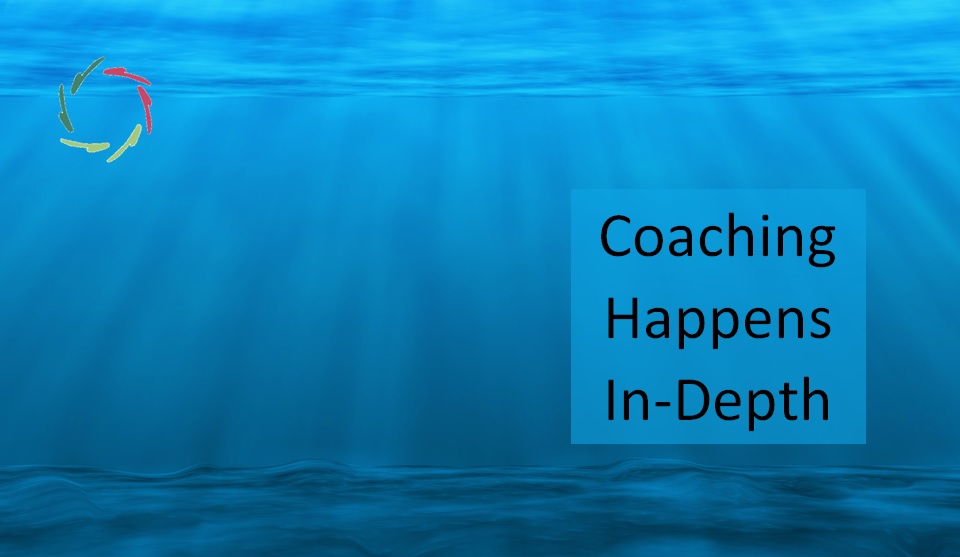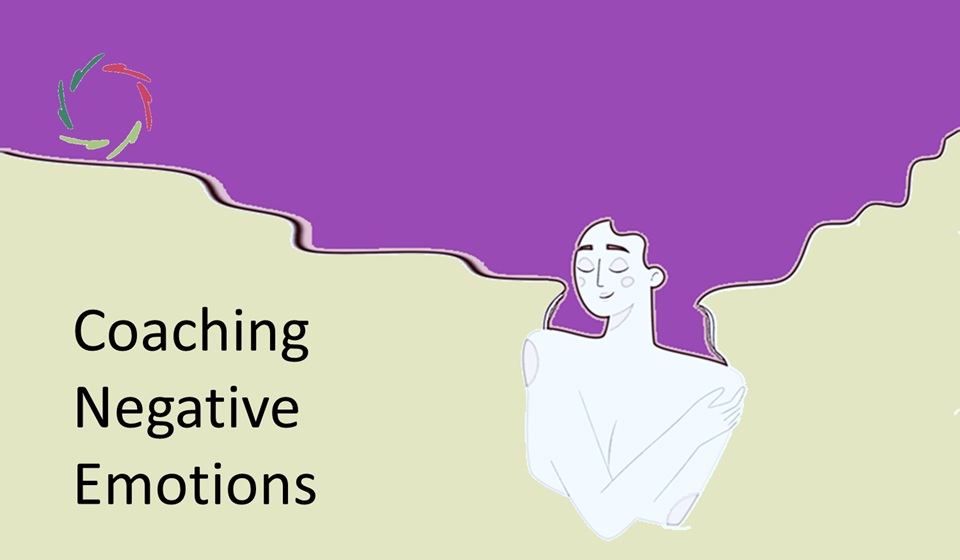Coaching Happens In-Depth

In issues that transcend the purely conceptual, change is needed at the same level as the issue.
Please read first [see: “Mental Change: How it Works“]
Contrasting
In order to clarify the coaching endeavor, it is interesting to contrast it with the therapeutic one.
Both can be enacted simultaneously. The coaching endeavor may be openly or covertly embedded within the therapeutic one. More or less, this is generally designated as ‘common factors’ in psychotherapy and broad healthcare.
The therapeutic endeavor
This is the so-called ‘medical model.’ Since the start, some 140 years ago, psychotherapy has been based on medicine and has kept this aim mainly for societal reasons.
This is a frequently used basic scheme of what psychotherapy is about:

One can see (a) as diagnostic, (b) as therapeutic, and (c) as consolidating the therapy.
For more about competence vs. conscious comprehension, [see: “Competence vs. Comprehension“]
Now we can easily contrast this to the following, with changes in the arrows:
The coaching endeavor

The new black arrow goes from non-conscious to non-conscious. Thus, the main action happens in-depth, even if some of it may still be seen at the conscious level. This is not necessarily less important, only less effective within this scheme. The bulk of the action gets done in-depth. This is the level of mental-neuronal patterns. [see: “Patterns in Neurophysiology“]
The premise of the coaching endeavor is that something can be done in coaching to instigate the in-depth action. Apparently, the client/user does not readily succeeds in this by himself, so he needs coaching.
Actually, a lot can be done.
What cannot instigate this action are techniques and procedures that act at the conscious level (grey arrow). Note that the conscious level is specifically sought out in the psychotherapeutic endeavor ― whether it be by ignoring the non-conscious or treating the non-conscious as consciousness behind the screen and that needs to be pulled from behind it.
The coaching endeavor is fundamentally different. Thus, it also needs a different technology with a very different aim.
Especially AURELIS coaching has this in-depth intention.
It is nothing but an endeavor to let this in-depth change happen smoothly, with much support (no coercion) and a strong ethical stance.
The above-mentioned different technology has been worked out pretty extensively. It is a kind of subconceptual communication that I call ‘autosuggestion.’ [see: “Mental Patterns Change through Autosuggestion“] Specifically within AURELIS, this is related to capital-c-Compassion. [see: “Essence of Compassion“]
It can be brought person-to-person or through prerecorded sessions. The former can be seen as empathy-beyond, the latter as what thoroughly lies behind opened-up placebo (and more).
Change without being changed.
Since the effect of autosuggestion happens in-depth and without any coercion, it is a spontaneous happening. This way, nothing much may be happening at the conscious level except that the coachee feels the change and can see the result of the change (two vertical arrows in the second figure). One can see in this the same principle as in many cases of ‘predictive brain.’ [see: “The Brain as a Predictor“]
A problem is that the coachee may attribute the spontaneous change to anything else since, by definition, he doesn’t play a consciously active role in the change. The coach may be cautious for this.
Importance to psycho-somatics
This is also the level that is more ‘fundamental’ in lying closer to the body. In fact, it is the body, but not in a mind-denigrating way. At this level, one can see that mind=body. [see: “‘Mind = Body’ Breakthrough“] Therefore, interestingly, this may be the level at which we can best strive to influence the mind side in psycho-somatics. [see: “<Mind = Body> Healthcare“]
This is a reason to choose for the coaching endeavor. It may not be achieved within the therapeutic endeavor. Therefore, paradoxically, the medical model needs to be relinquished to reach a practical way to take on the psychological part of psycho-somatics, being a huge part of what now lies in the medical domain. [see: “Medically Unexplained Syndromes (MUS)“]
A lot of research lies ahead in this regard.


